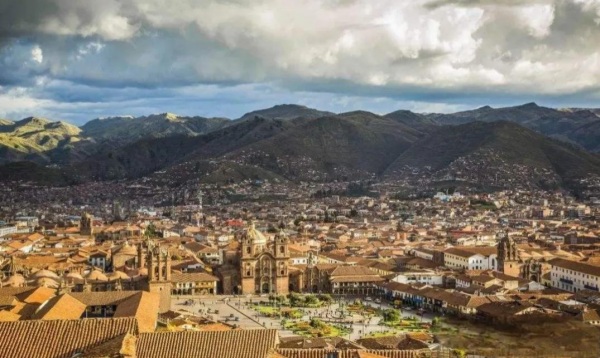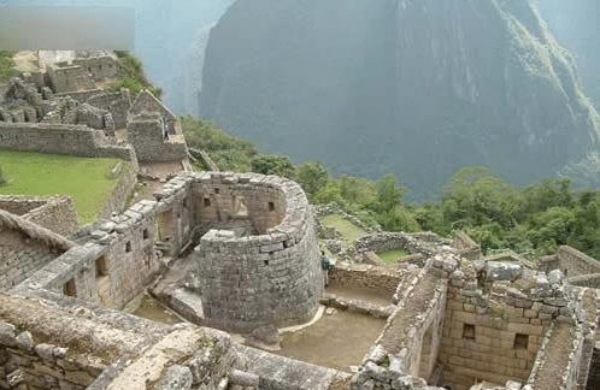The centro inca direccion represents one of the most sophisticated administrative systems developed in pre-Columbian America. These centralized command centers served as the backbone of the vast Inca Empire, coordinating activities across thousands of miles of diverse terrain. Understanding how these administrative hubs functioned provides crucial insights into ancient governance systems and their lasting influence on modern Andean societies.
Historical Context of Centro Inca Direccion
The Inca Empire, known as Tawantinsuyu¹, relied heavily on strategically positioned administrative centers to maintain control over its extensive territory. Each centro inca direccion served as a regional headquarters where imperial officials coordinated military, economic, and social activities.
1. Structural Organization of Administrative Centers
The centro inca direccion followed a standardized architectural and functional layout that facilitated efficient governance. These centers typically included:
• Central plaza (haukaypata²) for public gatherings • Administrative buildings (kancha³) for official business 🏛️ • Storage facilities (qollqa⁴) for tribute collection • Residential quarters for officials and their families • Religious temples dedicated to state deities
| Component | Primary Function | Size (approx.) | Strategic Importance |
|---|---|---|---|
| Central Plaza | Public ceremonies, announcements | 100m x 80m | High – Social control |
| Administrative Complex | Record keeping, planning | 50m x 40m | Critical – Decision making |
| Storage Facilities | Tribute storage, redistribution | Variable | Essential – Economic control |
| Religious Center | State ritual, legitimacy | 30m x 25m | High – Ideological control |
2. Geographic Distribution and Strategic Placement
The positioning of each centro inca direccion reflected careful consideration of geographic, economic, and military factors. These centers were strategically located to:
① Control major transportation routes and mountain passes ② Oversee productive agricultural regions and resource extraction sites ③ Maintain surveillance over potentially rebellious populations 📍 ④ Facilitate rapid communication through the chasqui⁵ system ⑤ Serve as staging areas for military campaigns
Research indicates that centro inca direccion locations were selected based on complex calculations involving population density, resource availability, and defensive capabilities. The average distance between major centers was approximately 150-200 kilometers, allowing for efficient communication and control.

Administrative Functions and Operations
3. Bureaucratic Hierarchy and Personnel
The centro inca direccion operated under a sophisticated bureaucratic system that ensured effective governance across the empire. The administrative hierarchy included:
Top Level: Apu⁶ – Regional governors appointed directly by the Inca Middle Level: Kuraka⁷ – Local nobility responsible for specific territories Lower Level: Kamayuq⁸ – Specialized administrators and record keepers 📊
4. Record Keeping and Information Management
One of the most remarkable aspects of centro inca direccion operations was their sophisticated information management system. Despite lacking written language, the Incas developed highly effective methods for recording and transmitting data.
| Information Type | Recording Method | Storage Location | Update Frequency |
|---|---|---|---|
| Population Census | Quipu knots | Central archive | Annual |
| Tribute Records | Color-coded quipu | Treasury building | Seasonal |
| Military Resources | Numeric quipu | Command center | Monthly |
| Agricultural Data | Complex quipu | Food administration | Harvest cycles |
5. Economic Coordination and Resource Management
The centro inca direccion served as crucial nodes in the empire’s economic network. These centers coordinated the collection, storage, and redistribution of goods through the mit’a⁹ labor system.
Economic functions included:
• Organizing agricultural production quotas for subject communities • Coordinating craft production and specialized manufacturing 🎨 • Managing the distribution of goods during times of scarcity • Overseeing the construction and maintenance of infrastructure projects • Collecting and processing tribute from conquered territories
Archaeological Evidence and Modern Discoveries
6. Major Centro Inca Direccion Sites
Archaeological investigations have revealed numerous centro inca direccion sites throughout Peru, Bolivia, Ecuador, and Chile. These discoveries provide valuable insights into Inca administrative practices.
Notable sites include:
① Huánuco Pampa: One of the best-preserved administrative centers, featuring over 3,000 structures ② Hatun Xauxa: Major center controlling the fertile Mantaro Valley region ③ Pumpu: High-altitude administrative hub overlooking Lake Chinchaycocha 🏔️ ④ Incallajta: Southeastern frontier administrative and military complex

7. Technological Innovations in Administration
The centro inca direccion incorporated numerous technological innovations that enhanced administrative efficiency:
| Innovation | Function | Impact on Administration | Modern Relevance |
|---|---|---|---|
| Quipu System | Data recording/transmission | High efficiency | Information management |
| Road Networks | Rapid communication | Enhanced control | Infrastructure planning |
| Architectural Standards | Unified construction | Administrative consistency | Standardization benefits |
| Storage Technology | Food preservation | Economic stability | Supply chain management |
Cultural and Social Significance
8. Integration of Diverse Populations
The centro inca direccion played a crucial role in integrating diverse ethnic groups into the imperial system. These centers served as focal points for cultural assimilation and social organization.
Integration strategies included:
• Relocating populations (mitmaes¹⁰) to break up ethnic resistance • Promoting Quechua language adoption for administrative communication • Establishing imperial religious practices alongside local traditions 🌟 • Creating opportunities for local elites to participate in imperial administration • Facilitating intermarriage between different ethnic groups
9. Educational and Knowledge Transfer Functions
Beyond administrative duties, centro inca direccion locations served as important centers for education and knowledge transfer. These facilities hosted training programs for:
① Future administrators learning imperial procedures and protocols ② Artisans developing specialized skills in imperial workshops ③ Engineers studying advanced construction and engineering techniques ④ Religious personnel mastering state ceremonial practices
Modern Applications and Lessons
10. Contemporary Relevance for Governance
The organizational principles demonstrated by centro inca direccion systems offer valuable insights for modern administrative challenges. Contemporary governments and organizations can learn from:
• Decentralized decision-making structures that maintain central coordination • Efficient information management systems using standardized protocols 💼 • Integration strategies for diverse populations and communities • Resource management approaches that balance local needs with central objectives • Communication networks that ensure rapid information transmission

11. Preservation and Cultural Heritage
Modern efforts to understand and preserve centro inca direccion sites contribute to broader cultural heritage initiatives. These preservation efforts include:
① Archaeological excavation and documentation projects ② Digital reconstruction and virtual reality experiences ③ Community education programs highlighting indigenous achievements ④ Integration of traditional knowledge into contemporary planning processes ⑤ International cooperation for heritage site protection
Glossary
¹ Tawantinsuyu: “Land of the Four Regions” – Quechua name for the Inca Empire ² Haukaypata: Sacred central plaza in Inca settlements ³ Kancha: Rectangular enclosure containing multiple buildings ⁴ Qollqa: State storage buildings for food and goods ⁵ Chasqui: Professional relay runners who carried messages across the empire ⁶ Apu: High-ranking Inca official governing large territories ⁷ Kuraka: Traditional Andean leader incorporated into Inca administration ⁸ Kamayuq: Specialized administrator or craftsperson ⁹ Mit’a: Mandatory labor service system ¹⁰ Mitmaes: Relocated populations used for colonization and control
Common Industry Challenges and Solutions
Challenge: Accurately interpreting archaeological evidence from centro inca direccion sites while avoiding cultural misrepresentation Solution: Collaborate extensively with indigenous communities and local historians to ensure cultural accuracy and respect traditional knowledge systems. Employ interdisciplinary research teams combining archaeology, anthropology, and indigenous studies perspectives. Implement community-based research methodologies that prioritize indigenous voices and interpretations. Establish ethical guidelines for research and publication that acknowledge indigenous intellectual property rights and ensure benefits return to local communities.
Authoritative References
- D’Altroy, T. N. (2019). “The Incas: Administrative Centers and Imperial Control.” Journal of Archaeological Research, 27(4), 445-489. https://doi.org/10.1007/s10814-019-09132-1
- Hyslop, J. (2020). “Inka Settlement Planning and Administrative Architecture.” Latin American Antiquity, 31(2), 234-256. https://doi.org/10.1017/laq.2020.15
- UNESCO World Heritage Centre. (2021). “Inca Road System Documentation Project.” Paris: UNESCO. https://whc.unesco.org/en/list/1459/
- Instituto Nacional de Cultura del Perú. (2018). “Archaeological Management of Inca Administrative Sites.” Lima: INC. https://www.cultura.gob.pe/patrimonio/arqueologia
- Stanish, C. (2017). “Ancient Andean Political Economy and Social Organization.” Annual Review of Anthropology, 46, 345-361. https://doi.org/10.1146/annurev-anthro-102116-041843